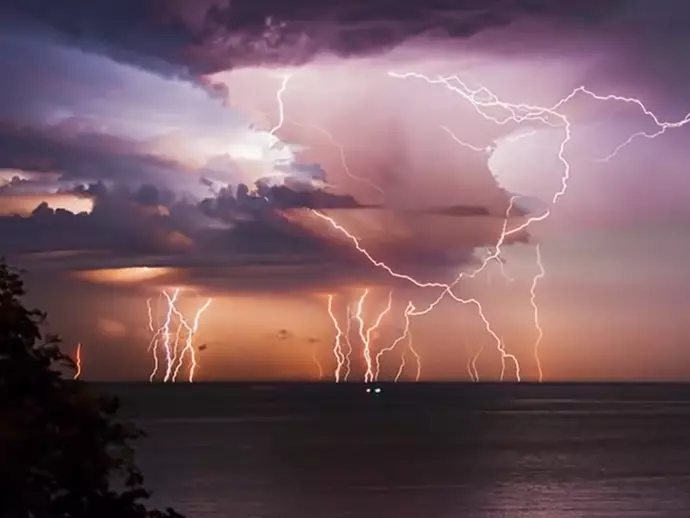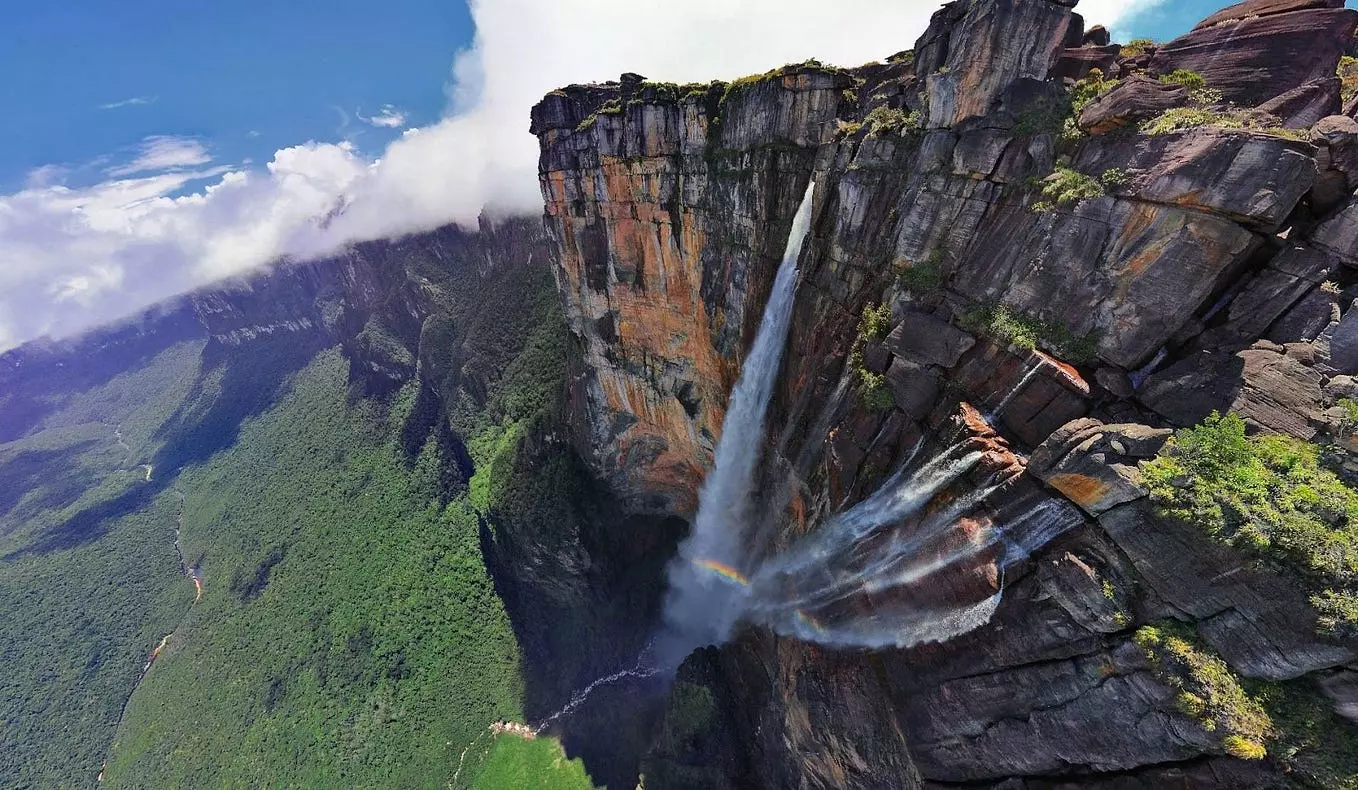Nestled on the northern coast of South America, Venezuela is a land that’s rich in natural beauty and cultural diversity. It’s a country that’s as vibrant as its history, and as diverse as its people. In this article we will cover many Venezuela fun facts, revealing intriguing facts that’ll have you seeing this nation in a whole new light.
From the world’s highest waterfall to its unique wildlife, Venezuela is a treasure trove of wonders waiting to be explored. So, buckle up and prepare for an exciting journey into the heart of Venezuela, a journey filled with fun facts that are as captivating as the country itself.
- Explore Venezuela's Unique Geography
- Vibrant Venezuelan Culture
- Venezuela Fun Facts: Delicious Delights
- Famous Venezuelans in History
- Conclusion
Explore Venezuela’s Unique Geography
Venezuela’s geography, marked by striking natural phenomena and exceptional landmarks, makes it an intriguing landmass. This section ventures deeper into the terrain, navigating through curious geographical wonders that establish Venezuela’s global identity.

NASA
The Lightning Capital of the World
In an extraordinary display of nature’s power, Lake Maracaibo in Venezuela holds the title as ‘The Lightning Capital of the World’. Witnessing an average of 150-160 nights of lightning each year, it’s a spectacle that rivets visitors and locals alike. Lake Maracaibo, lying in the oil-rich Maracaibo Basin, experiences sustained and intense thunderstorms due to unique atmospheric conditions.
Weather experts attribute this phenomenon to the lake’s specific shape, location and surrounding topography that stimulate the perfect conditions for thunderstorms to thrive.

Credit: Inti on Flickr
The Highest Waterfall on Earth
Scaling heights unparalleled on Earth, Angel Falls, situated in Venezuela’s Canaima National Park, stands as the planet’s highest uninterrupted waterfall.
With a startling height of 979 meters, Angel Falls drop is 15 times higher than that of Niagara Falls. Named after Jimmy Angel, an aviator from the United States who became the first to fly over it in 1933, the waterfall remains one of the country’s most significant tourist attractions. Its sheer height, serene location, and the pristine beauty surrounding it offer a mesmerizing sight, presenting Venezuela’s exceptional geography on a global platform.
Vibrant Venezuelan Culture
Venezuela’s vibrant culture stands as stunningly diverse as its natural beauty. This section spotlight’s Venezuela’s lively festivals, parades, and its noteworthy contributions to dance.
Colorful Festivals and Parades
In Venezuela, festivals and parades are very important. Each offering a burst of vibrant colors, eclectic music, and unique traditions. For instance, the Dancing Devils of Yare Festival, celebrated in the town of San Francisco de Yare, attracts both local and international audiences. The participants, dressed in elaborate, handmade devil costumes, ritually surrender to the power of good, marking Corpus Christi Day with a mesmerizing spectacle.
Other noteworthy events include the Feast of the Holy Cross on May 3rd and the Drums Festival of San Millán, embodying the African heritage of the Venezuelan people.
The Birthplace of Iconic Dances
Moreover, Venezuela has gifted the world with some iconic dances. At the forefront, the Joropo Dance, a synchronized performance of fluid movement and sweeping motions, represents the national dance of Venezuela. Danced to traditional Venezuelan music, Joropo encapsulates the country’s identity in a symphony of rhythm and movement.
Observers can also be charmed by the Merengue, a faster-paced dance which finds its roots in the Venezuelan and Dominican cultures alike. These contributions to global dance encapsulate the spirit of the Venezuelan people—passionate, energetic, and utterly captivating.
Venezuela Fun Facts: Delicious Delights
Venezuela, a country experiencing bold traditions and natural wonders, also boasts of enticing gastronomy. This section explores two beloved Venezuelan delicacies, Arepas and Cocada, shedding light on their significance and delectable profiles.
Arepas: The National Dish
Arepas, cornmeal cakes, form the cornerstone of Venezuelan cuisine. Originating from the indigenous people, this scrumptious delicacy now serves as an all-purpose food, integral for breakfast and dinner alike. Traditionally, Arepas present themselves as light, circular cakes filled with a variety of ingredients, such as shredded beef, chicken salad, or even sweet black beans. It’s not uncommon for Venezuelans to deem Arepas as the quintessential comfort food, perfectly encapsulating the soul of their culinary landscape.
Cocada: A Sweet Tropical Treat
Cocada, a delightful, creamy beverage, wins hearts with its lusciously sweet appeal. Coconut forms the primary base of this tropical drink, while condensed milk and vanilla essence enrich the richness and smoothness. Venezuelans commonly savour Cocada at beaches, considering it a refreshing companion on sun-kissed days. Signifying the country’s love for fruits and their innovative use in beverages, Cocada strongly imprints itself as a sweet tropical treasure of Venezuela.
Famous Venezuelans in History
Continuing the journey into Venezuela’s fascinating aspects, this section brings forward unique individuals from history who’ve left a substantial mark. From music and art to leadership and innovation, these figures embody the spirit of Venezuela’s cultural and intellectual vigor.
Musicians and Artists
Particularly enriched in music and art, Venezuela has given birth to an array of famous individuals. Gustavo Dudamel, a renowned conductor and violinist, often leads renowned orchestras including the Los Angeles Philharmonic. Teresa Carreño, another figure to note, offered her skills as a pianist and singer on stages worldwide. A different sort of artist, kinetic sculptor Jesús Soto, challenged traditional art forms with his interactive pieces.
| Name | Profession |
|---|---|
| Gustavo Dudamel | Conductor and Violinist |
| Teresa Carreño | Pianist and Singer |
| Jesús Soto | Kinetic Sculptor |
Leaders and Visionaries
Turning the spotlight to leadership, Simon Bolivar, often referred to as El Libertador, was a military leader who played a vital role in the Latin American independence movement. On encountering him, one cannot forget the charismatic and controversial figure of Hugo Chavez, Venezuela’s president from 1999-2013, who brought dramatic changes to the country’s political landscape. In the realms of academia, Baruj Benacerraf, a Venezuelan-born American, left his signature mark by receiving a Nobel Prize in Physiology or Medicine.
| Name | Profession |
|---|---|
| Simon Bolivar | Military Leader |
| Hugo Chavez | Former President |
| Baruj Benacerraf | Scientist |
Conclusion
Venezuela’s charm lies not just in its stunning landscapes, but also in its rich cultural tapestry woven by remarkable individuals across various fields. Its history is studded with the brilliance of musicians like Dudamel and Carreño, leaders like Bolivar and Chavez, artists such as Soto, and scientists like Benacerraf. Their contributions have shaped Venezuela into a vibrant nation that it is today. A journey through Venezuela isn’t just a trip across its physical terrain but a voyage through its cultural and historical richness. Every corner of the country offers a slice of its diverse and enticing experiences, making it a must-visit for those seeking an authentic taste of Latin America. So, when you’re planning your next adventure, remember that Venezuela’s got a lot more to offer than meets the eye.
Dive into more Culture in the Spanish Speaking World.

